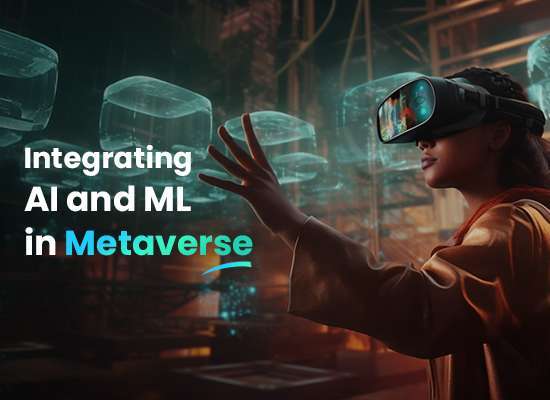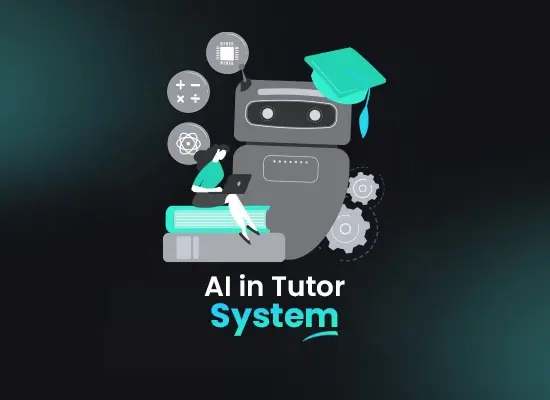Google’s AI-powered Search is upgrading: What’s new in Google SGE?

In the dynamic world of digital search, Google’s relentless pursuit of innovation takes center stage with its groundbreaking upgrade – the Google Search Generative Experience (Google SGE). Far beyond a mere update, SGE represents a seismic shift in the landscape, promising to revolutionize user interactions with search engines.
This comprehensive blog delves into the intricacies of Google SGE, its profound impact on businesses, and the recalibration required in SEO and marketing strategies.
Understanding Google SGE
Human errors are unintentional mistakes made by individuals during the execution of a task or the decision-making process. These errors can result from various factors, including lapses in attention, lack of knowledge or training, fatigue, and even the inherent limitations of human cognition.
Understanding human errors is crucial in various fields, as it allows for the development of strategies to mitigate their impact and prevent their recurrence. Whether in critical industries like healthcare and aviation or in everyday tasks, there are several human errors examples that we see and hear in our daily lived. Human error prevention serves as a foundation for fostering a culture of continuous improvement and enhancing overall efficiency.
Human Errors Examples
The Origin of SGE
The inception of Google Search Generative Experience (SGE) stems from an ever-growing need to transform the conventional search landscape. Recognizing the limitations of keyword-based searches, Google embarked on a journey to redefine user interactions with search engines.
This metamorphosis was fueled by a desire to make search more intuitive, contextually aware, and aligned with the dynamic expectations of users. Google sought to shift from a reactive model, responding to queries, to a proactive one, anticipating user intent through advanced generative algorithms.
As a result, Google Search Generative Experience emerged as not just an upgrade but a bold leap into the future of search, representing a commitment to user-centric, intelligent exploration of information.
Defining Google SGE
At the core of Google’s SGE lies a groundbreaking approach to search functionality. Unlike traditional search engines that rely heavily on keywords, SGE leverages generative algorithms that go beyond mere word matching. This innovation enables Google to understand the context behind user queries, deciphering intent with remarkable accuracy.
The defining feature of SGE is its ability to generate results that align closely with what users seek, even if the keywords used are not an exact match. This shift from a keyword-centric approach to a more nuanced understanding of user intent marks a paradigm shift in the search experience. SGE stands as a testament to Google’s commitment to not just answering questions but engaging in a dynamic, intelligent conversation with users through the medium of search.
Seamless Collaboration | Cost-Efficient Solutions | Faster Time-to-Market

Seamless Collaboration | Cost-Efficient Solutions | Faster Time-to-Market

Understanding the Basics of Google Search Generative Engine
At its essence, Google SGE represents an avant-garde search engine that harnesses the power of generative models to comprehend and respond to user queries. Diverging from conventional search engines, Google Search Generative Experience (SGE) utilizes artificial intelligence to grasp context, intent, and subtleties in search queries, resulting in more accurate and relevant outcomes.
How Does Google Search Generative Experience (Google SGE) Work?
The operational framework of Google Search Generative Experience revolves around the utilization of cutting-edge natural language processing (NLP) models, such as the formidable OpenAI’s GPT-3.5 architecture. This model not only comprehends but also generates responses akin to human language.
Through the analysis of extensive datasets, the model learns to interpret user queries, offering context-aware search results that adapt to individual preferences and the evolving nuances of language.
Benefits of Using Google Search Generative Experience
The advantages conferred by Google SGE are multifaceted:
Personalization:
SGE tailors search results based on user preferences and search history, providing a bespoke and tailored experience.
Contextual Understanding:
The generative model empowers google search generative experience (SGE) to understand and respond to intricate queries with a profound comprehension of context and intent.
Enhanced Relevance:
By factoring in context, SGE delivers highly pertinent search results, effectively saving users valuable time and effort.
What are Google SGE's Key Features?
The distinctive features that set Google Search Generative Experience apart include:
Contextual Search:
SGE excels in understanding the context of a query, facilitating more precise and relevant results.
Multimodal Search:
Through the integration of text and image recognition, SGE provides a comprehensive search experience, accommodating diverse user inputs.
Real-time Updates:
Google Search Generative Experience dynamically adapts to evolving trends and language patterns, ensuring users receive the most recent and relevant information.
Troubleshooting Tips for Google SGE
While Google SGE aims for a seamless user experience, occasional challenges may arise. Common troubleshooting tips involve clearing browser cache, verifying internet connectivity, and ensuring the browser is updated to the latest version.
Google SGE: Use Cases
The versatility of Google Search Generative Experience manifests in various applications:
Research:
SGE proves invaluable for academic and professional research, leveraging its capacity to comprehend complex queries and furnish accurate information.
Content Creation:
Writers and content creators leverage SGE for idea generation, language refinement, and information acquisition.
Interactive Learning:
SGE facilitates interactive learning by providing detailed explanations and engaging conversationally to address queries.
Comparing Google SGE with Traditional Google Search
In a comprehensive comparative analysis, Google Google Search Generative Experience distinguishes itself due to its advanced NLP capabilities, contextual understanding, and the provision of personalized results. Unlike traditional search engine relying on keyword matching, SGE adopts a more sophisticated and user-centric approach.
Here’s a comparison of both Search engines:

SGE’s Impact on Businesses
Navigating a New Digital Terrain
The advent of SGE heralds a new digital era for businesses, requiring a fundamental shift in how they approach online presence. With Google Search Generative Experience’s (SGE) contextual awareness, traditional metrics for website rankings may no longer suffice. Businesses must navigate this new terrain by optimizing their online content to align with the nuanced understanding of user intent that SGE offers.
This necessitates a strategic recalibration of digital footprints, emphasizing the importance of relevance, context, and user-centricity in online strategies. The impact extends beyond rankings; businesses now have the opportunity to forge deeper connections with their audience by providing content that resonates with their specific needs and preferences.
Adapting to Google SGE
Adaptability becomes a mandate for businesses in the SGE era. The contextual intelligence embedded in SGE demands that businesses tailor their online presence and content strategies accordingly. This involves not only understanding the technical aspects of SGE but also grasping its broader implications for user behavior and expectations.
Businesses need to embrace the change brought about by SGE, recognizing that it’s not just an upgrade in algorithms but a paradigm shift that requires a holistic re-evaluation of digital strategies.
The businesses that thrive in the SGE era are those that understand the power of context, relevance, and user-centricity in shaping the future of their online endeavors.
SEO and Marketing Strategies with Google SGE
Crafting Content for User Intent
Crafting content that aligns with user intent becomes paramount for effective SEO and marketing strategies. Traditional keyword-centric approaches may fall short as SGE’s generative algorithms prioritize understanding the context and intent behind user queries. Businesses need to shift their focus from merely providing information to creating content that anticipates and fulfills user needs.
This calls for a deeper understanding of the target audience, their motivations, and the questions they seek to answer. By tailoring content to address user intent, businesses can not only enhance their visibility in search results but also build meaningful connections with their audience.
Long-form content that explores topics in-depth, multimedia elements that enhance engagement, and contextually rich materials become essential components of a robust content strategy in the SGE era. By embracing these shifts, businesses can position themselves to thrive in a landscape where content is not just information but a dynamic conversation with users.
The Role of Semantic Search in Google SGE
Semantic search emerges as a pivotal player in the SGE landscape, transforming the way search engines interpret and deliver results. Semantic search goes beyond traditional keyword matching, considering the meaning and context of words in a query.
With SGE embracing semantic understanding, businesses must optimize their content to align with this advanced search methodology. This involves creating semantically rich content, offering comprehensive information that caters to the broader context of user queries.
By integrating semantic elements into their SEO strategies, businesses can enhance their visibility and relevance in the evolving landscape of SGE.
Personalization and User Experience in Google SGE
Personalization takes center stage in the SGE era, redefining the landscape of user experience and digital marketing.
As SGE learns from user behavior, preferences, and history, businesses must prioritize creating personalized experiences that resonate with individual users. This extends beyond tailoring content and involves optimizing the overall user interface, recommending personalized content, and ensuring a seamless journey through the digital landscape.
By prioritizing personalization, businesses not only align with the core principles of SGE but also foster stronger connections with their audience, ultimately driving engagement and loyalty.
Algorithmic Transparency and Ethical Considerations
The growing sophistication of algorithms, including those powering SGE, raises important questions about transparency and ethics. Businesses must prioritize algorithmic transparency to build trust with users.
This involves providing clear insights into how algorithms work, ensuring that biases are identified and addressed, and establishing ethical guidelines for the use of generative AI in search engines.
By proactively addressing these considerations, businesses can not only comply with ethical standards but also build a reputation for transparency and integrity in the digital landscape.
Seamless Collaboration | Cost-Efficient Solutions | Faster Time-to-Market

Seamless Collaboration | Cost-Efficient Solutions | Faster Time-to-Market

Functionality Update of SGE
Advancements in Natural Language Processing
The heartbeat of SGE lies in its continuous evolution, particularly in the realm of natural language processing (NLP). The latest functionality update of SGE brings forth advancements in NLP, enabling the search engine to comprehend and respond to user queries with unprecedented accuracy.
This enhancement goes beyond basic keyword matching, allowing SGE to understand the nuances of human language, including context, sentiment, and intent. Businesses need to acknowledge this pivotal shift in functionality and optimize their content to align with the more sophisticated understanding that SGE now possesses.
Enhanced Image Recognition
In addition to advancements in NLP, SGE’s functionality update extends to enhanced image recognition. This signifies a move towards a more holistic search experience, where users can engage with the search engine not only through text but also through visual elements.
Businesses that incorporate visually appealing and relevant content into their digital strategies stand to benefit from SGE’s enhanced image recognition capabilities. This evolution opens up new avenues for businesses to showcase their products, services, and brand identity in a visually compelling manner, creating a more immersive and engaging experience for users.
Availability of New Features
Voice Search Evolution
As SGE unfolds its latest features, the evolution of voice search takes center stage. Users can now interact with the search engine using advanced voice commands, marking a significant leap in the accessibility and convenience of search.
Businesses must recognize the growing prevalence of voice search and optimize their content to cater to this emerging trend. This includes creating content that is conversational, concise, and tailored to the way users naturally speak.
By embracing the evolution of voice search, businesses can position themselves to capture the attention of an expanding user base and stay ahead in the ever-evolving landscape of SGE.

Future of Search: An Insight into Google SGE
Anticipating the future trajectory of search engines reveals a landscape characterized by enhanced AI capabilities, improved user intent understanding, and seamless integration across platforms. Google SGE stands at the vanguard of this evolutionary path, paving the way for more intuitive and efficient search experiences.
The Trajectory of Search Technology
While SGE represents a significant leap forward, businesses must also consider the trajectory of search technology beyond SGE.
- Emerging trends, such as the integration of voice and visual search, and the potential impact of augmented reality, signal further advancements in the search landscape.
- Businesses should stay vigilant and adaptive, preparing for the integration of these technologies into mainstream search experiences.
By staying ahead of the curve, businesses can position themselves as early adopters, leveraging emerging technologies to enhance their digital presence and stay at the forefront of digital discovery.
Conclusion
In conclusion, businesses must embrace the transformative power of SGE, recognizing it as a gateway to a dynamic future in the digital landscape. Embracing change is not merely an option but a necessity for businesses looking to thrive in the SGE era.
This involves a proactive approach to adapting digital strategies, understanding the intricacies of SGE, and aligning with the principles of context, relevance, and user-centricity that define the new era of search.The journey doesn’t end with SGE; it’s a continuous evolution. Businesses should navigate the future by staying informed about emerging technologies, trends, and user behaviors.
Whether it’s the integration of new search modalities, the evolution of user interfaces, or the introduction of AI-driven features, businesses should position themselves to navigate the ever-changing digital landscape.

Javeria Asim
Content Writer







